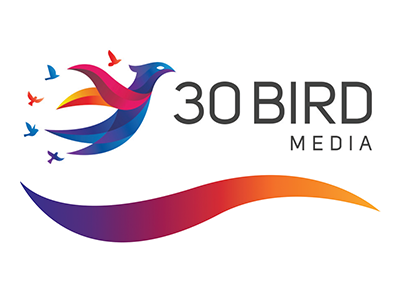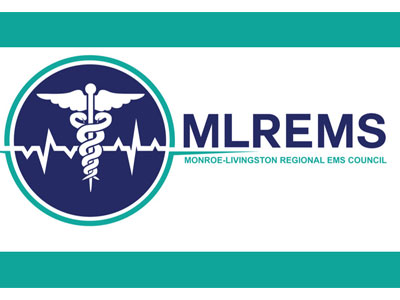 |
Prehospital Tracheostomy Care for the BLS Provider |
1.00 |
One of the most intimidating events for a BLS provider is the 911 call for a pediatric patient with a difficult airway. Dr. Christopher Harmon and Paramedic Kuo Downing Reese discuss the challenging topic of the emergent airway and tracheostomy management in the prehospital setting.
Final Exam: This multiple-choice exam is designed to test your knowledge of the material you just reviewed. You have two attempts to gain an 80% or higher on this exam. Please take your time and answer each question carefully. |
 |
Electrical Safety |
0.75 |
This course covers OSHA’s role and standards regarding electrical safety/hazards, defines the basic fundamentals of electricity, identifies and recognizes safety hazards, and describes protection methods against electrical hazards.
|
 |
Project Management - Advanced: Implementing Plans and Controlling Change |
0.75 |
This course will cover how to use a project management information system, implement a work authorization system, and conduct mid-project evaluation. You will also learn how to identify the information and supplies needed to control project change, implement a change control system, and identify control maintenance methods. |
 |
Budgeting: Reviewing Budgets |
1.00 |
A typical budget contains information for a single year and is updated and revised periodically. Each company creates a budget that fits its unique needs. A budget can be used for many purposes, but its primary functions should be to support strategic goals and to help identify when actual results deviate from what was predicted. |
 |
How to Navigate Stress Like a Hero |
1.00 |
If only stress weren’t so stressful. There is good news, though: stress doesn’t have to be the enemy! In fact, we can enhance our emotional intelligence by identifying the sources of our stress and creating a plan for adaptive stress management. Stress fuel—adrenaline and cortisol—can empower us to be Life-Givers or Life-Suckers, and fortunately, we get to make the choice. |
 |
School-Age Care as a Family Service: Emphasis on Planning Opportunities for Family Involvement |
2.00 |
The foundation for getting parents involved in school-age programs is to keep parents well informed about what is happening in the program. Quality programs also provide parents with opportunities to make suggestions and give feedback on program services through suggestion boxes, feedback forms, and surveys. When parents are encouraged to have input in the program, they develop trust and confidence in the program, and feel a sense of pride and ownership. They are more likely to participate as resourceful partners with program staff when they know their ideas are welcome and valued. Finally, because parents are all different from each other, it's important to provide many different opportunities for them to connect with the program. Staff in quality school-age programs recognize that all parents don't have to be involved in the same way. |
 |
Building Relationships with School Personnel |
2.00 |
School-age programs and schools share a mutual goal of supporting the growth, development, and learning of school-age children. Over 50% of all school-age programs nation-wide are housed in school facilities. When school-age programs are housed in school facilities, it is essential for staff in school-age programs to establish and maintain a positive relationship with school personnel. This makes it possible for schools and programs to work together to support the needs of the whole child. Staff can develop successful partnerships with school personnel by cultivating an understanding of the needs, interests, and goals of school personnel and using effective strategies, tools, and systems to build a spirit of positive collaboration and communication. |
 |
Preventing Sexual Harassment and Understanding California Law (Corrections) |
0.50 |
This course will teach California employees how to recognize sexual harassment, defines the rights and responsibilities of employers and employees, and provides an overview of the legal remedies available in sexual harassment lawsuits. |
 |
Microsoft Outlook 2019 Complete |
16.00 |
Outlook 2019 Complete provides the concepts and skills to be productive with Microsoft Outlook 2019, starting with fundamentals and working up to advanced tools and techniques.
This course maps to the objectives of the Microsoft Office Specialist exam for Outlook 2019. Objective coverage is marked throughout the course, and you can download an objective map. |
 |
Mang Mountain Pit Viper |
1.00 |
In this module you will learn about an elusive, beautiful—and highly threatened—species from China. The Mang Mountain pitviper Protobothrops mangshanensis is just as important to the ecosystem as the giant panda—if a little less cuddly. |
 |
Project Management - Advanced: Project Integration and Plan Development |
0.50 |
This course will cover how to measure data during project integration and differentiate between project and product life cycles. You will also learn how to identify the importance of developing a project plan, the elements of a project plan, the key input required for project plan development, and methods used in project plan development. |
 |
The Purpose for Ethical Commitment (CDA 6) |
2.00 |
This course explores the NAEYC Code of Ethical Conduct, equipping you to uphold your responsibilities and moral obligations towards children, families, colleagues, and the wider community. Discover how this essential framework guides your interactions and decisions, fostering a foundation of trust, respect, and professionalism in your work. |
 |
Project Management - Basic: Time Management |
1.25 |
This course will teach you how to identify the components of time management, identify the purpose of activity definition and sequencing, and recognize different diagramming techniques. You will also learn how to identify the factors that affect activity duration, and identify techniques for estimating activity duration. |
 |
Developing Effective Outdoor Environments and Interest Areas: Assessing Space and Planning Activities |
1.00 |
School-age children need daily opportunities to exercise, relax, and participate in a wide range of outdoor activities. The hours children spend in after school programs are often the best hours of the day for getting fresh air and enjoying the outdoors while it's still daylight. School-age programs can provide safe, secure settings where children can enjoy the outdoors. In this course, we will explore how to assess space and plan activities in outdoor environment and interest areas. |
 |
Developing Effective Outdoor Environments and Interest Areas: Moving Indoor Interest Areas Outside |
1.00 |
School-age children need daily opportunities to exercise, relax, and participate in a wide range of outdoor activities. The hours children spend in after school programs are often the best hours of the day for getting fresh air and enjoying the outdoors while it's still daylight. School-age programs can provide safe, secure settings where children can enjoy the outdoors. In this course, we will explore strategies for moving indoor interest areas into outdoor environments. |
 |
Overview of the Americans with Disabilities Act Topic 1: Overview of the ADA (Corrections) |
0.25 |
Welcome to the Overview of the Americans with Disabilities Act, Topic 1: Overview of the ADA. |
 |
Constructing: FAST-ED Overview |
1.00 |
Professor of Emergency Medicine and Chief of the Division of Prehospital Medicine at the University of Rochester, Jeremy Cushman, brings his experienced team of prehospital providers together to discuss the benefits of Field Assessment Stroke Triage for Emergency Destination (FAST-ED). You will want to take notes and download your favorite smartphone app. This lesson is sure to spark an excellent discussion with your training officers and/or medical director(s).
Final Exam: This multiple choice exam is designed to test your knowledge of the material you just reviewed. You have two attempts to gain an 80% or higher on this exam. Please utilize the smartphone app of your choosing and take your time and answer each question carefully. |
 |
Health and Stress Management for Paraprofessionals |
1.00 |
Every day, paraprofessionals dedicate themselves to caring for and nurturing students and families. Often, paraprofessionals are so dedicated to serving others, they neglect their own needs. When this happens, paraprofessionals can experience stress that causes them to become overwhelmed, exhausted, frustrated, dissatisfied with job responsibilities, and unappreciated. When they maintain a healthy, balanced lifestyle, paraprofessionals are in a much better position to face the challenges of supporting and nurturing children and families with positive energy, enthusiasm, patience, and empathy.
By developing self-awareness, linking their personal and professional goals, developing a healthy balanced lifestyle, and identifying and managing stressors effectively, they can create and maintain a positive sense of well-being that allows them to maximize their ability to build positive relationships with students, parents, colleagues, and others. |
 |
Coping with Food Allergies in Child Care Spaces (CDA 1) |
2.00 |
A food allergy is a reaction within the body's immune system. It can be anywhere from mild to severe, and in some cases, it may be life-threatening. We must understand the symptoms and triggers of food allergies, the ways to prevent accidental exposure to prohibited foods, how to care for a child experiencing symptoms. This course is designed to be part of a Child Development Associate (CDA) Credential™ curriculum. It covers CDA Subject Area 1: Planning a Safe, Healthy Environment to Invite Learning. This course can also be taken as a stand-alone learning event, or as part of a broader early childhood education curriculum. |
 |
Transition Planning: Preparing Students with IEPs for Life After High School |
1.00 |
This course covers transition planning for paraprofessionals and teachers. Transition planning is a process that supports movement from school to post-school activities for a student with a disability. It’s a set of coordinated activities focused on improving the academic and functional achievement of the student as they move into various post-secondary vocational and educational settings. |
 |
Creating and Maintaining Healthy and Safe School Environments |
1.00 |
Keeping school-age children healthy and safe is a major priority for schools. This requires careful attention to setting up the environment to promote healthy habits and using effective strategies for monitoring and maintaining a hygienic environment. It also requires setting up the classroom environment to promote safety and using effective strategies for monitoring and maintaining a safe environment. Because students are growing towards independence, it is also essential to help them develop habits and behaviors for living a healthy lifestyle and to help keep them safe from harm as they participate in school experiences. |
 |
Providing Homework Support: Types of Homework Support |
1.00 |
Research indicates there are many different ways to provide effective homework support in school-age programs. When planning a homework support program, it is important for school-age programs to develop a homework philosophy that is consistent with the program’s overall philosophy, and reflects current research on best practices for providing homework help. The homework philosophy should also reflect the needs of parents and children in the program, and strike a balance between homework needs and other experiences that help children grow and learn out-of-school. In this course, we will explore the various types of homework support. |
 |
Helping Children with ADD Succeed In School-Age Programs: Characteristics and Needs of Children |
1.00 |
Children with ADD regularly experience struggles and challenges at home, in school, and in the community. Without the help of knowledgeable, understanding, and supportive people, they often experience multiple failures and frustrations on a daily basis. In this course, we will explore characteristics and needs of children with ADD. |
 |
Implicit Bias (Corrections) |
1.00 |
In this course, you’ll learn about implicit biases that happen despite our best intentions. After completing this course, you will be able to:
Define implicit bias.
Describe how implicit bias can impact the workplace or an organization.
Identify the steps you can take to further educate yourself about this topic. |
 |
Framing: Documentation-Proper and Complete |
1.00 |
Your local training director, operations officers, and medical direction have expectations that should be met for each and every documentation piece that you provide. It is our intention to provide you with knowledge on this subject that will spark good discussion and hopefully a better overall product for you and your service. |


























